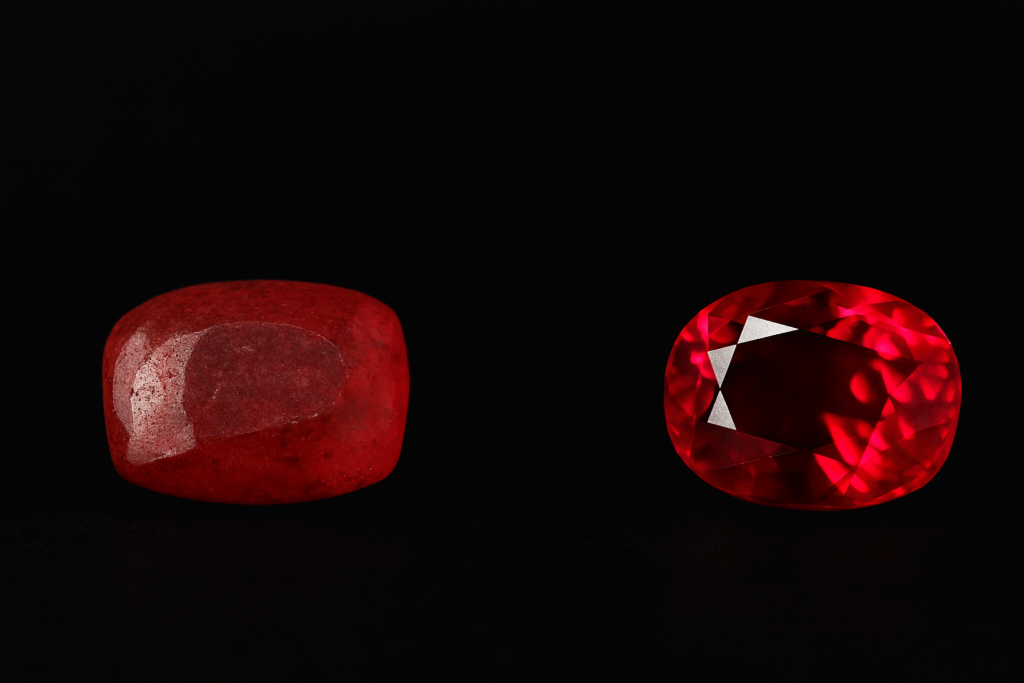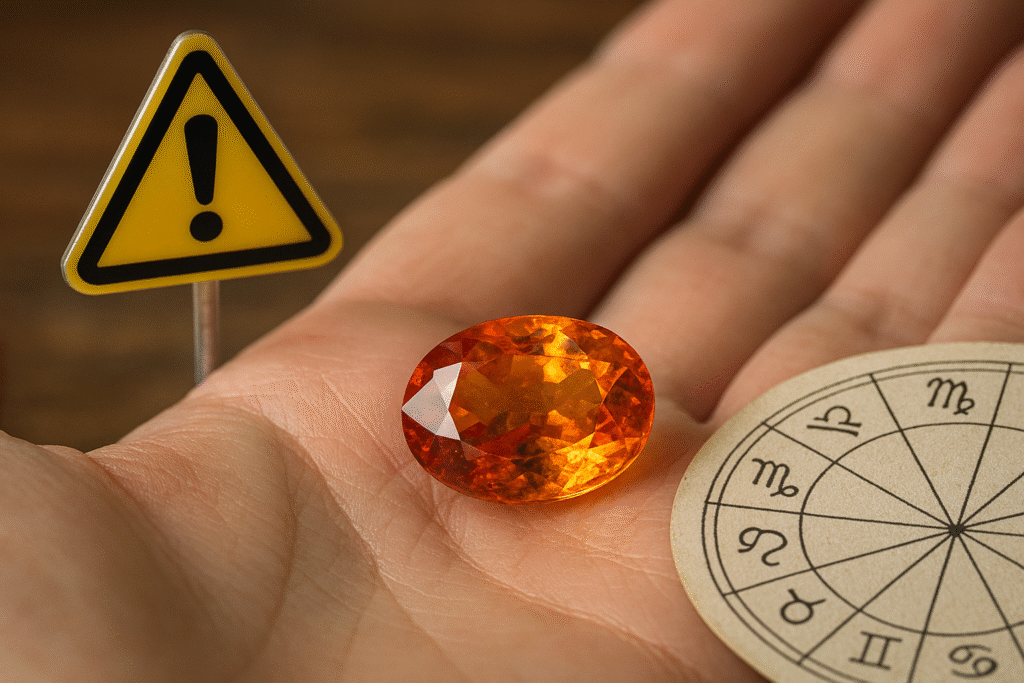When beginners buy sapphires, they often repeat the same sapphire cut mistake. They focus only on size or color while ignoring the cut. Yet, the cut is the soul of the stone because it controls brilliance.
A poor cut causes two common problems:
- Windows – light leaks out through see-through areas.
- Extinction – light gets trapped, creating dark patches.
Both issues make a sapphire look dull. Even a 5-carat stone loses life if the cut is wrong. By contrast, a smaller sapphire with ideal proportions shines brighter and carries more value.
“Brilliance depends on cut, not carat weight.”
Why Cut Defines Value
Case Study: Two Stones, Same Weight
For example, dealers compared two sapphires of equal weight.
- The first stone had a shallow cut, so it lost 40% of light through a window.
- The second stone had balanced proportions, therefore it returned almost 90% of light.
As a result, the well-cut gem sold faster and at a higher price. Buyers recognized the sparkle instantly.
What Buyers Prefer
Research confirms this. Surveys show that 62% of sapphire buyers prefer brilliance over carat weight. Because of this, cut remains the top factor driving real market value.
Expert Advice on Avoiding Mistakes
With over 40 years in the gemstone trade, I have seen many collectors regret their sapphire cut mistake. Once jewelers set a poorly cut stone, flaws in brilliance stand out clearly.
Don’t rely only on carat or color. Instead, always check how the stone reflects light before you pay for it.
👉 If you are learning, read Shopping for Gems: A Beginner’s Guide for practical tips.
FAQ: Sapphire Cut Mistakes
What is the biggest sapphire cut mistake?
Many buyers focus only on size or color. Because they ignore cut, even rare stones lose their brilliance.
What does a sapphire window mean?
A shallow cut creates a window where light leaks through. As a result, the stone appears flat and lifeless.
Can extinction be avoided?
Yes. A deep cut causes extinction, but if you choose proper angles, you can reduce the dark areas.
Can a poor cut be fixed?
A skilled cutter can improve brilliance. However, recutting reduces weight and increases cost, so weigh options carefully.
Where can I learn more about jewelry quality?
Read Understanding BIS Hallmark: What It Means for Your Jewellery to understand purity standards. Additionally, this article explains how to verify metal quality before purchase.
For more information about gemstone grading, visit the Gemological Institute of America (GIA), a trusted authority in the field.
Introduction
This comprehensive Watch Buying Guide answers the most common questions about timepieces.
Whether you’re purchasing your first watch or adding to your collection, these expert insights help you make informed decisions.
From understanding movement types to choosing the right size for your wrist, you’ll find everything needed before making a purchase.
What Types of Watches Should You Consider? – Watch Buying Guide Insights
Understanding the five main categories helps narrow your options:
- Mechanical watches – Use springs and gears. No battery needed.
- Quartz watches – Battery-powered; most accurate.
- Automatic watches – Wind themselves from wrist movement.
- Digital watches – Display time numerically on a screen.
- Smartwatches – Connect to your phone and track fitness data.
Accuracy Expectations – Watch Buying Guide Tips
- Quartz watches – Lose about 15 seconds per month.
- Mechanical watches – Lose 20–40 seconds per day.
- Atomic watches – Lose 1 second every 100 million years.
- Your phone’s clock stays perfectly accurate.
Water Resistance Considerations
Water resistance ratings affect usage scenarios:
- 30m – Handles rain and handwashing
- 50m – Safe for swimming
- 100m – Suitable for snorkeling
- 200m+ – Scuba diving
Replace gaskets every 2–3 years to maintain resistance.
Maintenance Schedule – Watch Buying Guide Advice
- Quartz watches – Battery replacement every 1–3 years.
- Mechanical watches – Full service every 3–5 years.
- Service costs: $200–800 depending on the brand.
Watch for stopping, running fast/slow, or condensation under the crystal.
Pricing Strategy
- Budget watches – Plastic cases, basic movements
- Mid-range watches – Steel cases, reliable mechanisms
- Luxury watches – Precious metals, hand-finished details
Remember: craftsmanship, materials, and brand prestige drive prices.
Sizing Advice
- 6–7 inch wrists – 38–42mm
- 7–8 inch wrists – 40–44mm
- 8+ inch wrists – 42–46mm
Ensure lugs don’t overhang wrist edges.
Complications to Prioritize
- Date display – Useful daily
- GMT hand – Second time zone
- Chronograph – Stopwatch
- Moon phase – Decorative
- Annual calendar – Adjusts month lengths
More complications = more things that can break.
Maintenance Tips
- Clean with a soft cloth
- Avoid extreme temperatures & magnets
- Wind manual watches daily
- Use watch winders for automatics
- Don’t adjust date between 9 PM–3 AM
Investment Potential
- Most watches lose value after purchase
- Only select Rolex, Patek Philippe, Audemars Piguet models appreciate
- Vintage watches from 1960s–70s show strong growth
- Buy watches you enjoy wearing, not solely for investment
Essential Tools
- Spring bar tool
- Case back opener
- Soft polishing cloth
- Watch cushion
- Demagnetizer
Where to Purchase
- Online – Better selection, often cheaper
- Physical stores – Try before buying
- Authorized dealers – Full warranties
- Grey market – Discounts, limited warranty
- Forums/eBay – Vintage pieces, verify authenticity
Learn More:



